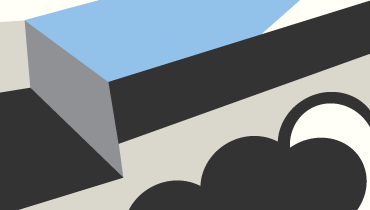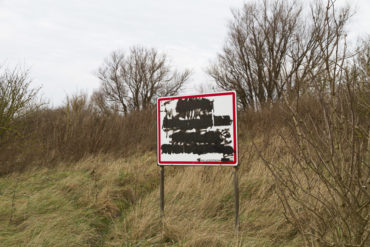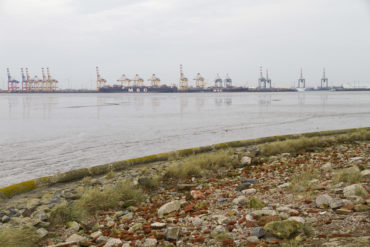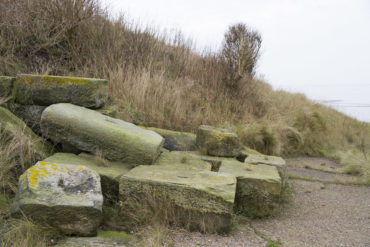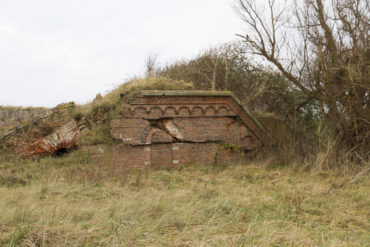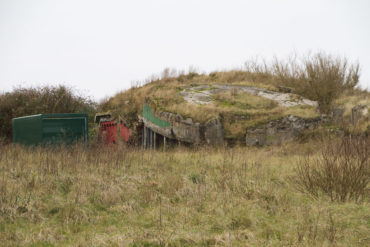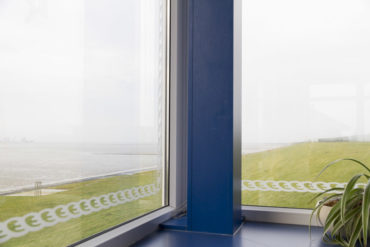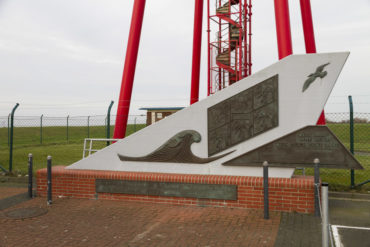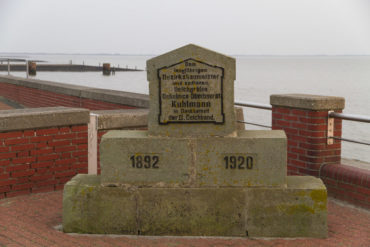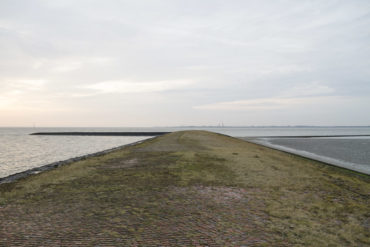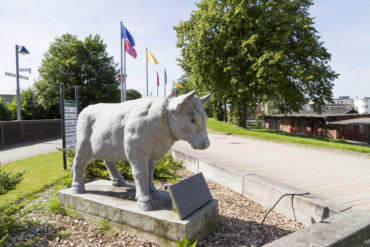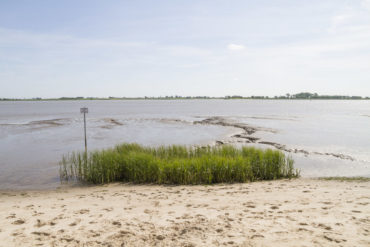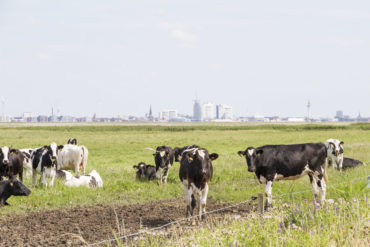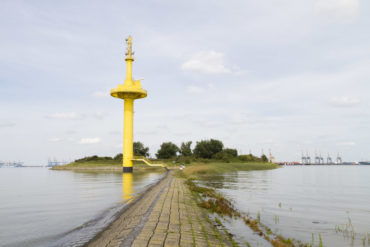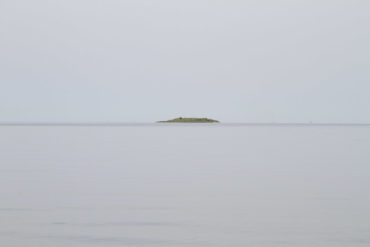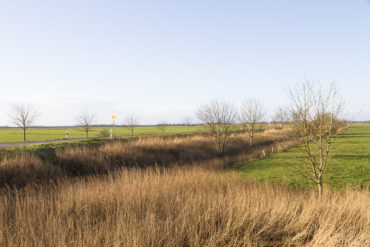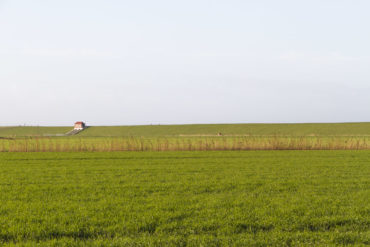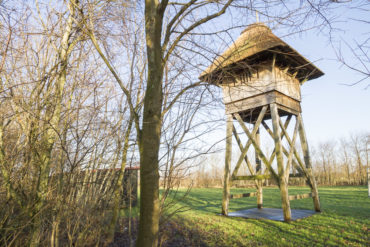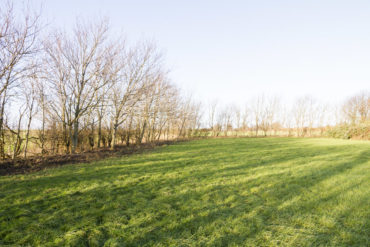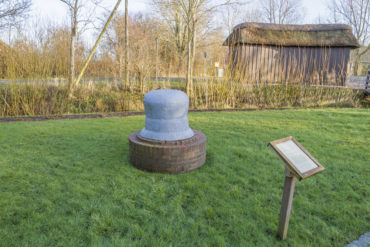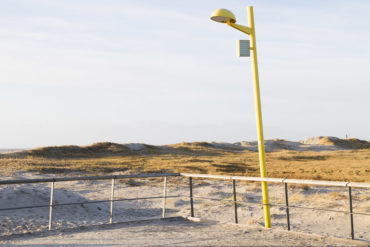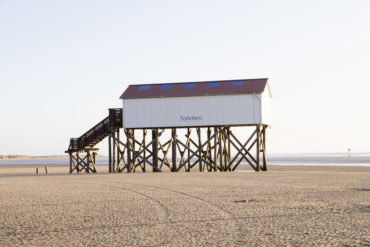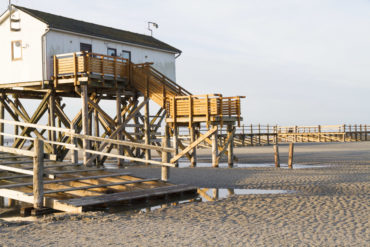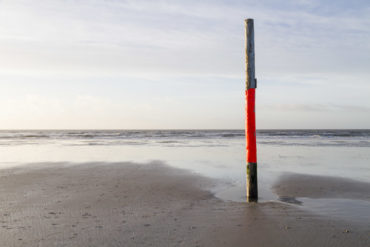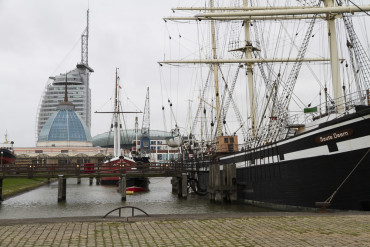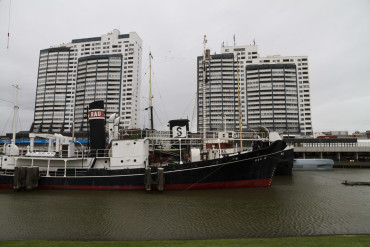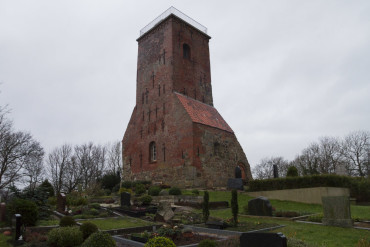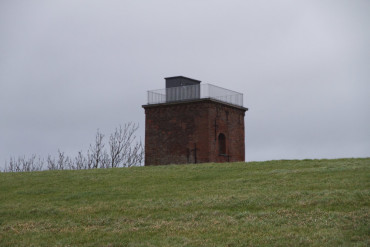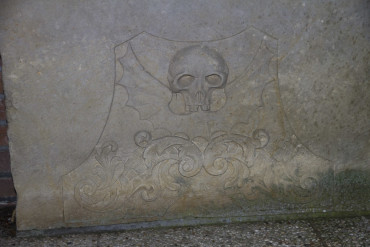That winter, Tom’s mother was visiting. He thought she would be interested in Langlütjen and was determined to go again. My scepticism about this venture turned out to be misplaced. When we arrived, not only was the tide out, making our route over to Langlütjen I easier, but the island seemed to be entirely abandoned. The “no entry” signs were either gone or blacked out.
We walked around the edge, taking care not to trip on the loose rubble, which the island was made of. Originally a sandbank, the island was fortified by the Prussian Navy at the time of the Franco-Prussian war. Langlütjen II was built a few years later, slightly farther out to sea. Both forts were decommissioned in 1918, having never been used.
During the second world war, Langlütjen I was used as an anti-aircraft position. I’d read that the defences were blown up at the end of the war, and the rubble was covered with sand. As we went into the small inland area, however, ruins of the fortifications were still very visible.
Wandering across the island, we noticed we were entirely alone here. The place seemed to have its own ecosystem, somehow protected from winds and frost, and we were surprised to see how many flowers were in bloom in late December. Tom’s mother had been reading about Buddhism, and she thought this could be a sacred site.
From here we drove across Butjadingen to Eckwarderhörne, where we sat for a while in the restaurant below the beacon, looking over toward Wilhelmshaven. We tried to work out where our apartment had been, when we were living there the previous year.
Beside the restaurant were two memorials, one commemorating the dyke building works of the early 1980s – “no land without dyke, no dyke without land” – and one dedicated to the dyke reeve Kuhlmann, about whom I can find no information on the internet.
